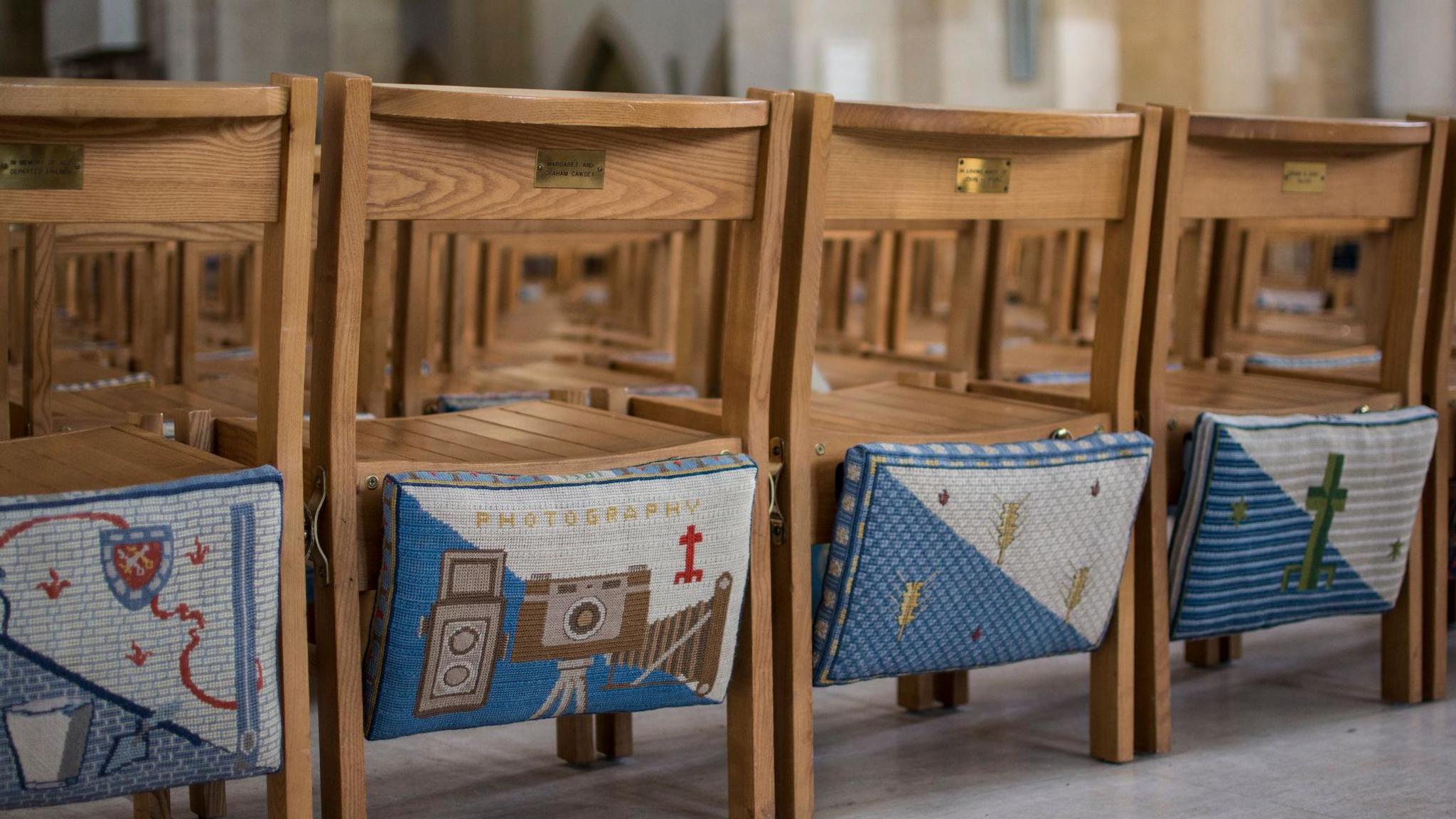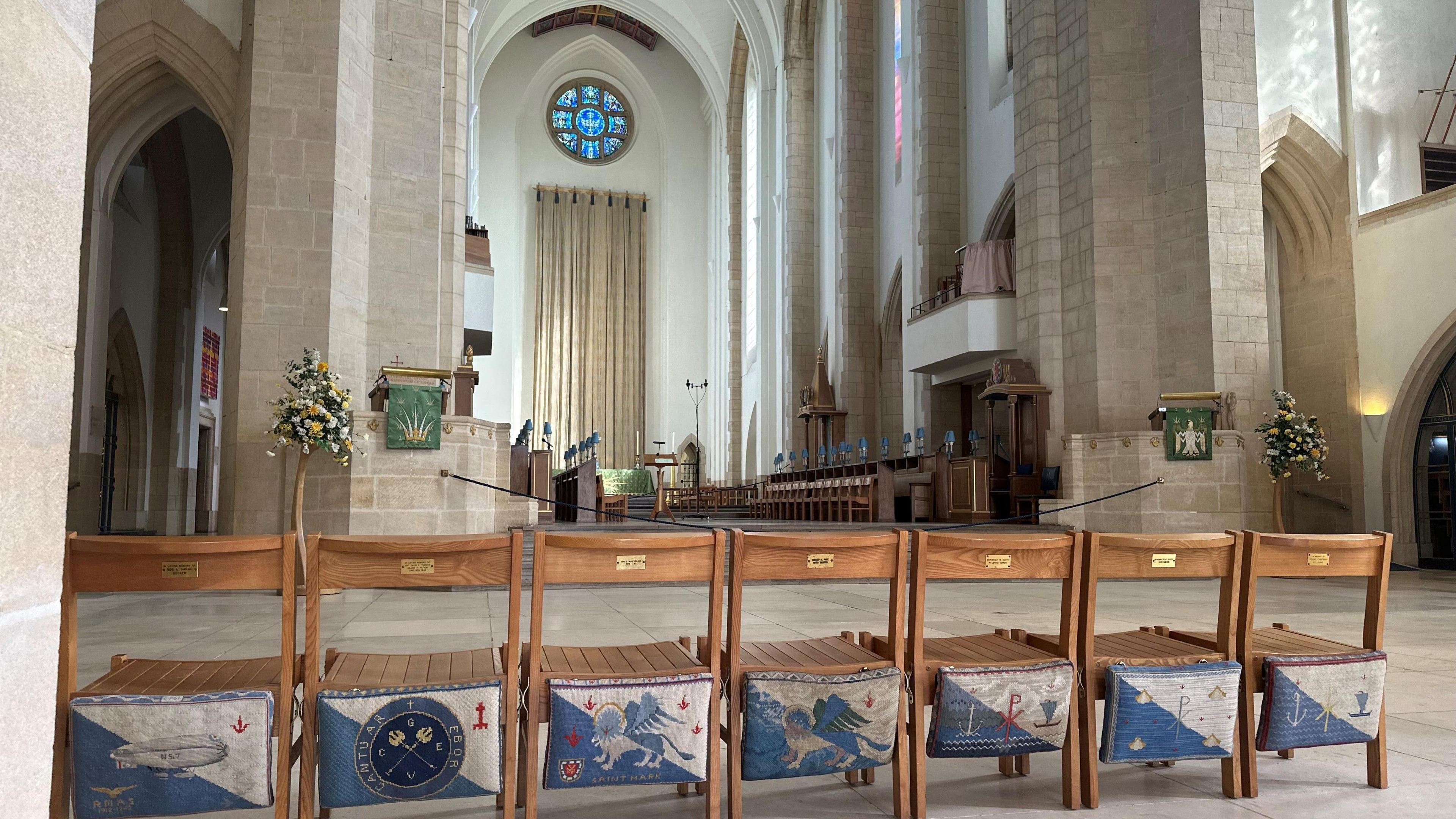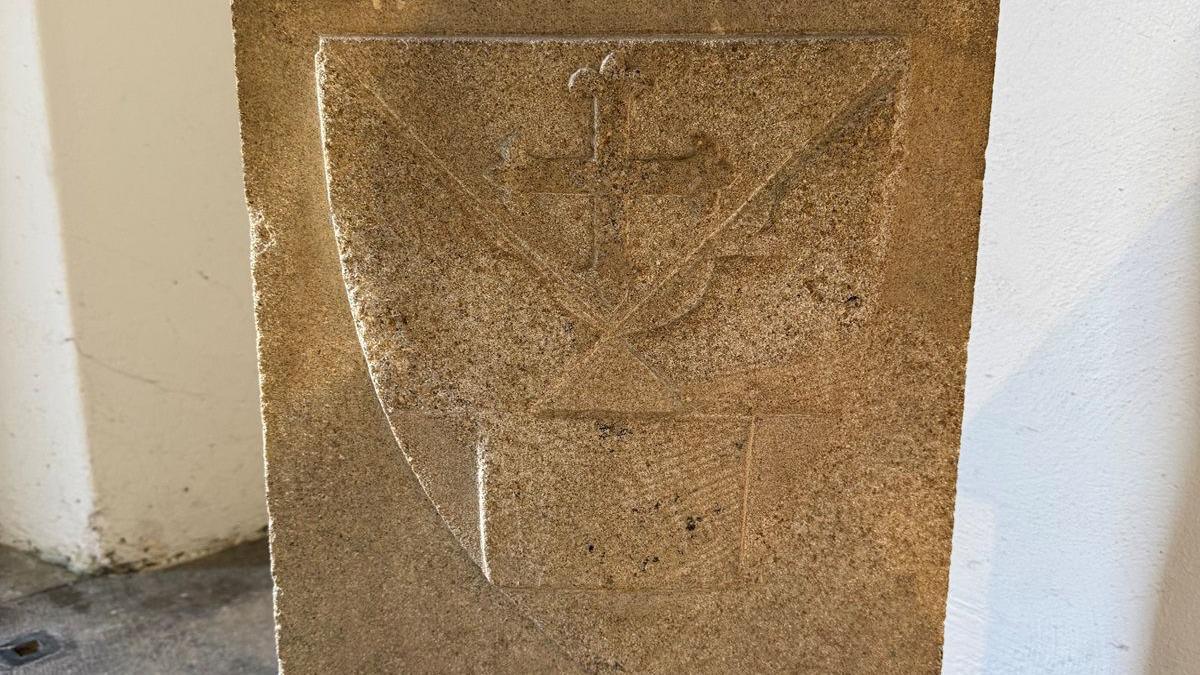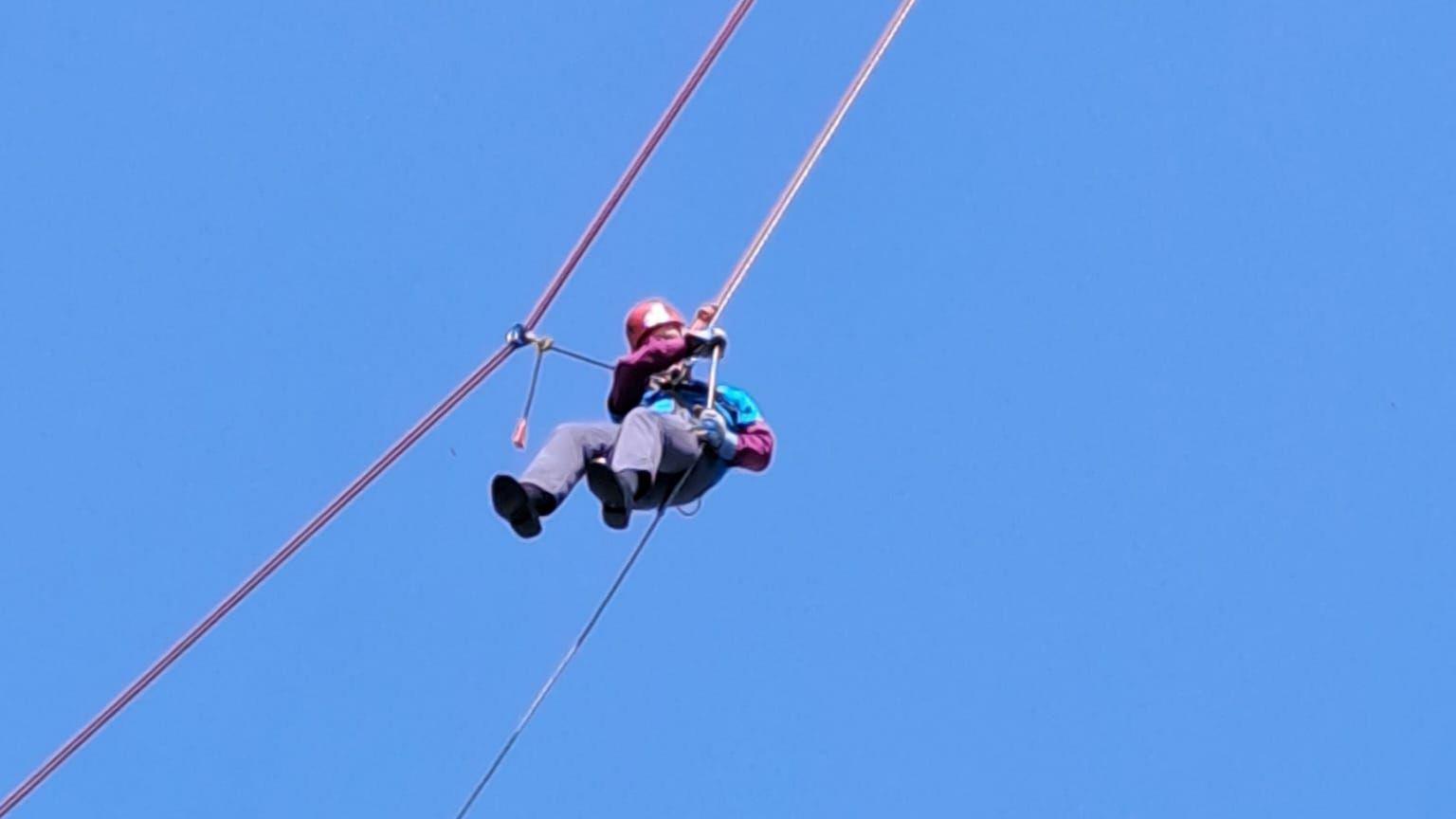British history told through church cushion project

Janet Mathews, Guildford Cathedral's chief tour guide, says the church has 1,600 kneeling cushions
- Published
Inside Guildford Cathedral in Surrey, embroidered images on 1,600 kneeling cushions created by ordinary people reflect the lives of post-war Britain and momentous changes that shaped the country.
These kneelers, most of them dating from the 1950s and 1960s, form one of the largest collective artworks in Britain.
The time spent on the artworks, some of which are believed to have taken 110 hours to complete, indicated people's steadfast commitment to their project.
The embroidery includes themes of sports, leisure activities, and the uncertainty of the transition between tradition and technological progress.

The kneeling cushions mostly date from the 1950s to 1960s and feature a range of themes including leisure activities, sports and technological advancements of the time
Janet Mathews, Guildford Cathedral's chief tour guide, told Secret Surrey the kneelers were a representation of ordinary people who came to the church.
"They would see themselves and their own lives reflected in the cathedral," she added.
The idea came from Prudence Maufe, the wife of the cathedral's architect Sir Edward Maufe, who wanted the kneelers to be designed with the theme "a history of our time", Ms Matthews said.
She added some of the embroideries reflected a juxtaposition between nostalgia and changing times.
"Some feature very traditional activities such as gardening, sewing and laundry work," she said.
"Then, we have artwork with power stations, pylons, jet-propelled aircraft and factories."
From sacred place to outer space
Ms Matthews explained some kneelers were not designed to be "picturesque" but to serve as a "visual history" of the time.
"The pylons, for example, are not designed to be pretty pictures.
"It showed the exciting possibilities that many more houses were fitted with electricity after the Second World War."
Ms Matthews said there was a "post-war nostalgia for peace" and excitement of technological development.
"Some of the kneelers featured manual tools that were still being used while another one featured a bright red Massey Ferguson tractor which was popular in the mid-50s," she added.
Secret Surrey
Explore more fascinating stories from Surrey
Listen and subscribe for the latest episode of Secret Surrey
Follow BBC Surrey on Facebook, external, on X, external. Send your story ideas to southeasttoday@bbc.co.uk , external or WhatsApp us on 08081 002250.
Related topics
- Published2 April

- Published18 June
